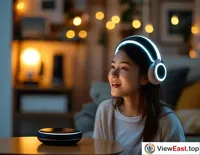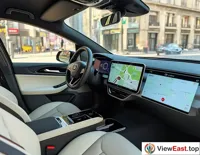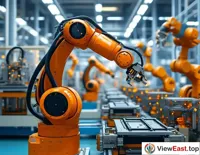







The development of smart voice technology in China is akin to a grand technological revolution, transforming lifestyles and securing a pivotal role in the global AI arena. This article delves into the illustrious journey of China's smart voice technology, highlighting the exhilarating achievements.
I. The Evolution of Smart Voice Technology
Smart voice technology, a crucial mode of human-computer interaction, has seen a remarkable evolution. Starting from the 1980s, voice recognition technology advanced from isolated word recognition systems to large-vocabulary continuous speech recognition systems. By 2011, the advent of Microsoft's DNN (Deep Neural Network) significantly reduced recognition errors by about 90%, spurring rapid development in technology and products. From 2016 to the present, machine voice recognition accuracy has reached human levels, approximately 95%, marking the era of smart voice technology implementation with the advent of smart voice assistants and smart speakers.
II. Policy Support
The development of China's smart voice industry has been significantly supported by favorable policies. The government has rolled out numerous policies to promote the deep integration of AI technology with various application fields. With the "14th Five-Year Plan" prioritizing AI as a top-tier frontier technology, the AI industry, including smart voice technology and related services, will receive government backing, creating a favorable macro environment.
III. Outstanding Performance of Chinese Enterprises
Chinese enterprises have excelled in the field of smart voice technology. Companies like iFlytek, YITU Technology, Baidu, Tencent, and Alibaba leverage the vast Chinese user base to access a Chinese voice database far larger than what is available in the United States. This provides their voice recognition AI with superior learning conditions. For instance, Tencent can gather Chinese voice data from its WeChat users, which has over a billion monthly active users. This is an unparalleled advantage for Chinese companies in Chinese voice recognition technology.
IV. Breakthroughs by iFlytek
iFlytek has achieved significant breakthroughs in voice recognition technology, overcoming the extremely complex scenario of multi-person mixed scene voice transcription, achieving an 86% voice recognition accuracy rate. At the 2023 National Science and Technology Award Conference, iFlytek, as the lead entity, won the first prize of the National Science and Technology Progress Award for its project "Key Technologies and Industrialization of Multilingual Intelligent Voice and Related Applications." iFlytek's Starfire Large Model V4.0 and its related applications ranked first in eight international mainstream tests, surpassing GPT-4 Turbo.
V. Wide Application of Smart Voice Technology
The application scenarios for smart voice technology continue to expand, from smart homes, in-vehicle entertainment, intelligent customer service to education, and more. With continuous technological innovation and growing market demand, the application scenarios of smart voice technology will continue to expand, covering more industries and fields.
VI. Future Outlook for Smart Voice Technology
In the future, as smart voice technology continues to evolve, voice interaction will gradually become a mainstream mode of interaction. Smart voice technology will focus more on user experience, improving the efficiency and accuracy of voice interactions, allowing users to perform various operations through simple voice commands, enhancing work and life efficiency.